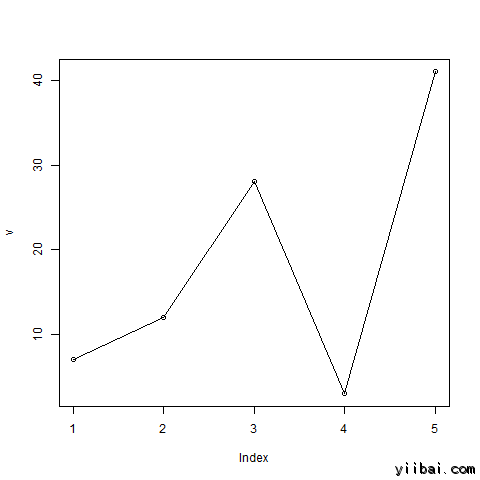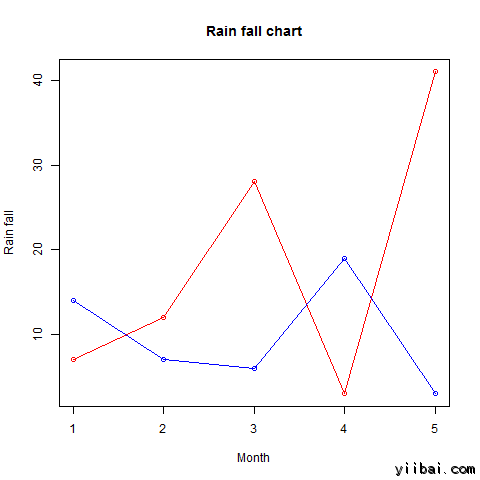R语言线型图
发布于 2016-01-02 09:31:35 | 1196 次阅读 | 评论: 0 | 来源: 网络整理
线性图是通过绘制它们之间的线段连接的一系列点的图表。这些点是有序的在其坐标(通常是x坐标)值中的一个。线图通常用于识别趋势的数据。
R中的 plot()函数是用于创建线图。语法
R中用来创建一个线图基本的语法来是:plot(v,type,col,xlab,ylab)
以下是所使用的参数的说明:
-
v - 是一个包含数字值的向量。
-
type - 取值“p”只是用来绘制点,“i”只绘制线条,而 “o”画两个点和线。
-
xlab - 是标签为X轴。
-
ylab - 是标签为Y轴。
-
main - 是图表的标题。
-
col - 用于给出点和线的颜色。
示例
使用输入向量和类型参数为“O”来创建一个简单的折线图。 下面的脚本将创建和保存线图在R的当前工作目录。
# Create the data for the chart.
v <- c(7,12,28,3,41)
# Give the chart file a name.
png(file = "line_chart.jpg")
# Plot the bar chart.
plot(v,type="o")
# Save the file.
dev.off()
当我们上面的代码执行时,它产生以下结果:

线图表标题,颜色和标签
线图的特征可通过使用附加参数进行扩展。我们增添点和线的颜色,给出图表的标题,并添加轴的标签。
示例
# Create the data for the chart.
v <- c(7,12,28,3,41)
# Give the chart file a name.
png(file = "line_chart_label_colored.jpg")
# Plot the bar chart.
plot(v,type="o",col="red",xlab="Month",ylab="Rain fall",main="Rain fall chart")
# Save the file.
dev.off()
当我们上面的代码执行时,它产生以下结果:

线图中的多条直线
多于一行可以通过使用 lines()函数来绘制在同一图表上。
第一线绘制之后,line()函数可以使用一个附加的矢量作为输入来绘制第二条线在图中
# Create the data for the chart.
v <- c(7,12,28,3,41)
t <- c(14,7,6,19,3)
# Give the chart file a name.
png(file = "line_chart_2_lines.jpg")
# Plot the bar chart.
plot(v,type="o",col="red",xlab="Month",ylab="Rain fall",main="Rain fall chart")
lines(t, type="o", col="blue")
# Save the file.
dev.off()
当我们上面的代码执行时,它产生以下结果:
